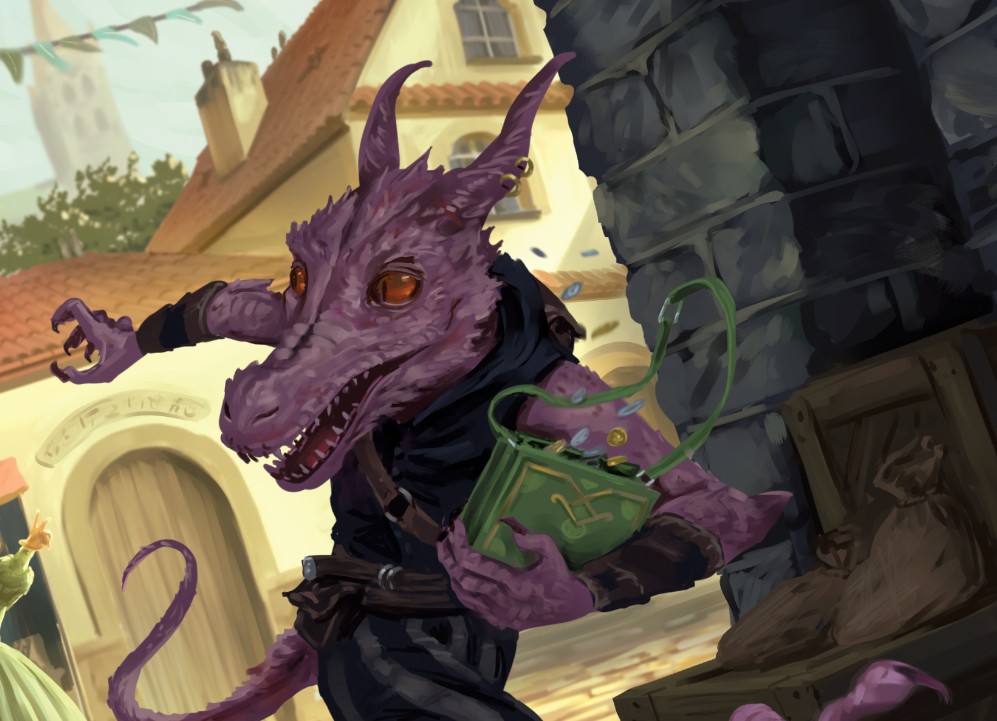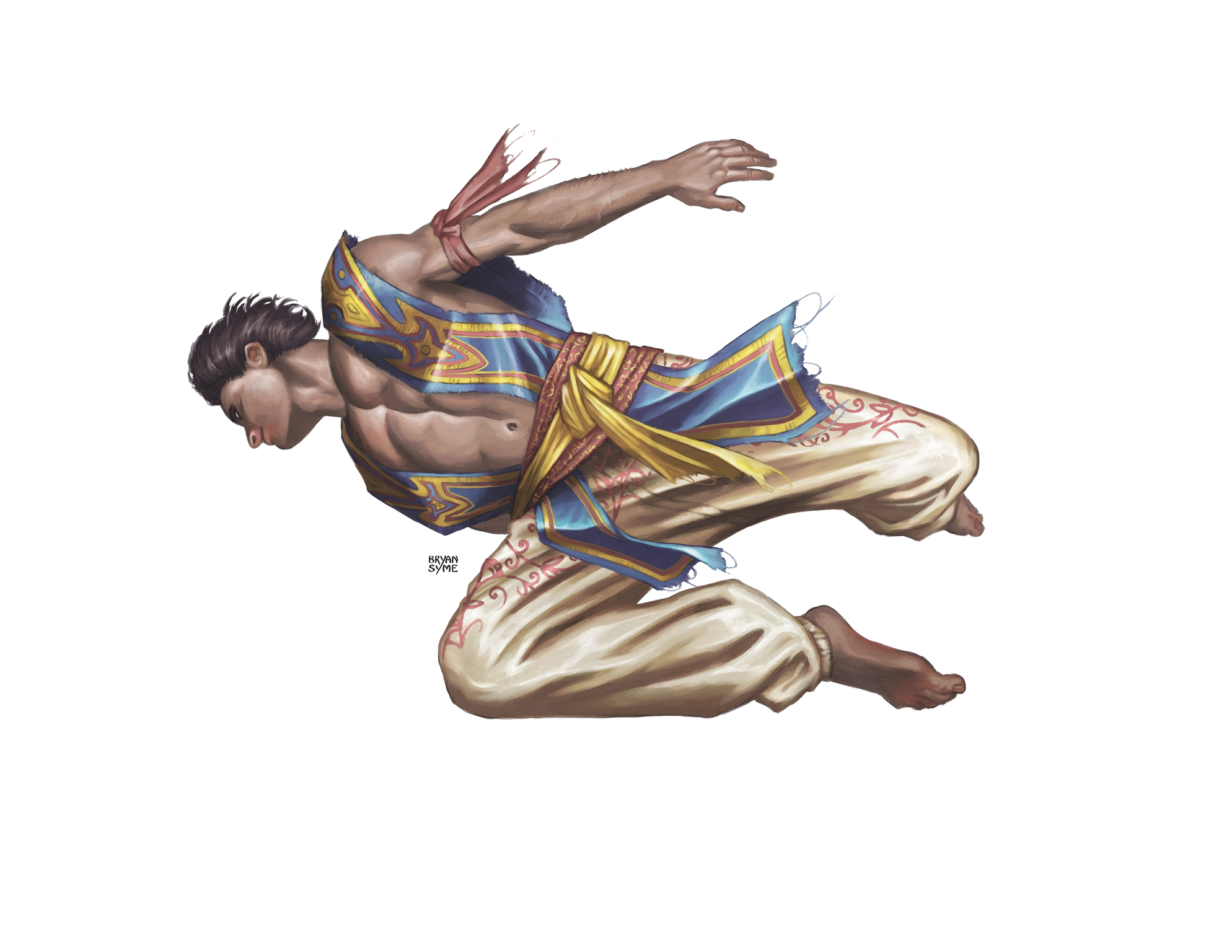
The Game Master’s Guide is packed to the brim with all kinds of variant rules, including skill challenges and four new initiative methods!
In “Chasing the Inferno”, an adventure in the Labyrinth Adventures book, the PCs have a foot race with some incentivized bearfolk to see who reaches the ferry first. This encounter transmutes the chase encounter into a race encounter with a few tweaks.
Let’s keep it going. This series shows you how to hack the chase encounters to create fantastical competitions.
With that, we’re off to the races!
Planning the Relay Race
A relay race is a team competition where runners take turns completing different parts of a racecourse. When planning your fantasy relay race, consult the relay structure and consider many of the examples below.
Number of Legs
As GM, bring your players into the encounter and allow them to participate. When selecting the number of legs for a race, try a number exactly equal to the number of players. For narrative reasons, you can choose more . . . we’ll talk about that in “Getting Involved” below. Or, you can roll on the Legs table.
Legs
| d4 | There Are ___ Legs for this Race. |
| 1 | Four |
| 2 | Six |
| 3 | Eight |
| 4 | Ten |
Distance to Race
Earthly relay races are usually the same distance—400 meters, even 800 or 1600 meters. Your fantasy race isn’t bound by the metric system though! A race you create can have different distances for each leg.
Each leg of the race can be abstracted mechanically into an increment called “Progress.” In addition to the actual measured distance, select from or roll on the Progress table to find how long each leg of the race is, and total Progress required to finish it.
Progress
| d4 | Each Leg of the Race . . . | Progress |
| 1 | is an equal portion of the track, roughly 1 mile in length. | 8 |
| 2 | symbolically represents a great achievement by the race sponsor, such as a king or a warrior. (For example, eight thousand arm lengths for the chariots the general slew at the battle the race commemorates). | 12 |
| 3 | doubles in length with each leg (100 feet, 200 feet, 400 feet, 800 feet, etc.). | 1/2/4/8 |
| 4 | is a march to the top of the hill (and straight back down again). | 12 up, 8 down |
Type of Track
Relay races on Earth are often on uniform tracks on grass, dirt, or even springy rubber. In your fantasy race, you can have tracks that look more like obstacle courses—just look at Tough Mudder runs for inspiration.
| d8 | This Relay Leg Involves . . . |
| 1 | A flat track around a jousting ring |
| 2 | Well worn paths through the queen’s woods |
| 3 | Swimming through waters infested with swarms of quippers |
| 4 | Climbing vines through a humid jungle |
| 5 | A sequential number of floating discs that racers can reach by riding flying brooms |
| 6 | Opening ley lines and traveling to the correct race station |
| 7 | Pushing a stone wheel to a hilltop before ziplining across a valley |
| 8 | Lava leaping in an underground cavern |
Running the Race
With a course set up, let’s move on to the race itself. While each race can vary greatly, the common thread running through each relay is that the racer must pass a baton to the next racer before the team can advance toward the finish line.
Consider the following topics when hacking the chase rules to make your fantasy relay race.
Racing Order
As GM, you must adjudicate the order in which each racer takes their turn. Consider using these options, which are increasingly more complex.
| d6 | The Turn Order is . . . |
| 1 | PCs first, then opposing racers |
| 2 | Opposing racers, then the PCs |
| 3 | Passive initiative (see page 193 of the Game Master’s Guide) |
| 4 | Round-based initiative (see page 193 of the Game Master’s Guide) |
| 5 | Popcorn Initiative. As each racer goes, they choose the next racer to act. No single racer can go again until every racer has had a turn. |
| 6 | Barker Initiative. Roll initiative against a target number (e.g., 20). The racer who gets the closest to the target number without going over goes first and follows along in order. However, anyone who rolled above the number jumped offsides and is penalized by going last and losing 1 Progress. |
Race Obstacles

As the racers continue along the track, a GM can (and should!) throw obstacles in the way. Choose a likely skill the racer must use to avoid the obstacle along with a skill DC. When encountering the obstacle, the racer rolls the skill check and compare the result to the DC.
- 10+ over the DC: 5 Progress
- 5–9 over the DC: 3 Progress
- 1–4 over the DC: 2 Progress
- Exactly the DC: 1 Progress
A racer always earns 5 Progress on a natural 20 and 0 Progress on a natural 1.
Failed checks generally result in 0 Progress—you can even award negative progress depending on the circumstances. This might represent the racer failing to advance or falling (literally). Or it can represent other racers advancing more quickly than expected.
The Obstacles table includes some example obstacles; look at traps and hazards in the Player’s Guide and Game Master’s Guide and other Kobold Press adventures for ideas, especially the Great Race of Trombei. You can also look at Tough Mudder obstacles for real-world inspiration.
Obstacles
| d6 | Obstacles | Check/Save |
| 1 | Broken Ground. The even track gives way to choppier terrain where one wrong step can send you sprawling. | DEX (Acrobatics) |
| 2 | Passing Opponents. As you move to pass other racers, they bump and jostle you to keep their place. | STR (Athletics) |
| 3 | Slippery. The ground is slick with oil. Whether accidental or intentional, it’s unsafe for the racers. | WIS (Insight) or DEX (Acrobatics) |
| 4 | Archery Practice. The fey lady who sponsored this relay has allowed sprite archers to fire tiny arrows at the racers. While the arrows are mere pinpricks, the soporific magic contained inside impacts the racers. | CHA save |
| 5 | Intense Heat. Sweat pours out of you like a faucet while you’re running alongside the underground lava flow. | CON (Athletics) |
| 6 | High Altitude. This far up the mountain, the air is too thin to offer the PC enough oxygen to sprint. | CON save |
Passing the Baton
The most exciting part of a relay race is the exchange of the baton. Good teams can make up for bad legs with stellar exchanges, while race leaders can lose it all with one bad pass.
The baton must be passed in a designated exchange zone, and any exchange that occurs outside this zone results in disqualification or a Progress penalty. While conservative racers may wait in place at the end of the exchange zone before running, good racers time their paces so they can receive the baton while running. You can represent this tactic with an appropriately challenging WIS (Insight) check.
The baton can be made of any number of materials, some of which can affect the race itself. Choose or roll on the Baton Material table for some inspiration.
Baton Material
| d4 | The Baton Is . . . |
| 1 | A really good stick, about two handbreadths’ long, that the race organizer found while walking in the woods last week. |
| 2 | A ribbon that the racer must collect from a defined location on the course, which may be hidden. |
| 3 | An adamantium tube. When dropped, everyone in a 30-foot radius must make a DC 15 Strength save or be knocked prone. |
| 4 | A magic wand with 10 charges at the start of the race. The racer must expend charges equal to the spell circle + 1 to use a spell slot for a spell they have prepared. When the baton is passed to the next racer, the wand regains 1d8+1 charges. |
Getting Involved
Let’s face it, certain characters may not be particularly adept at physical races. The bard may have low CON, the wizard may have a laughable STR, and a character might have a physical shape or disability that limits their participation. These characters don’t need to skip the session! Incorporate some of these ideas into the race to ensure everyone participates in the fun.
Coaching
A PC can serve as a coach for an NPC racer, conveying the PC’s wisdom and knowledge to the racer. During the race, that player could play as the NPC racer, allowing involvement and agency.
Spells
Even if the race judges look unfavorably upon the casting of spells during a relay race, build in opportunities where the racers or other parties can cast spells to affect the outcome. And a race might be even more fun if spellcasting is explicitly allowed.
Cheering
Are bards barred from competing? Race organizers might consider spellcasting as a form of cheating, but bardic inspiration dice are a form of performance enhancement that’s almost undetectable. Bards often make great support people at a relay race, and the loudest fans in the audience can be trying to convey an inspiring word for the racers to hear.
Combat
Your high school coach would need to fill out reports if a relay race broke out into a donnybrook, but they’re not here. When developing the race, you can create zones along the course where combat happens between the racers, their fans, or monstrous elements. You can also place zones where interested parties rain down arrows, spears, and spells on the racers.
You could even include fighting pits where gladiators align their blades and their bets on certain racers. Victory in the pits can result in unexpected windfalls, as the race organizers grant to the victorious gladiator’s favored racer.
Read more at this site
